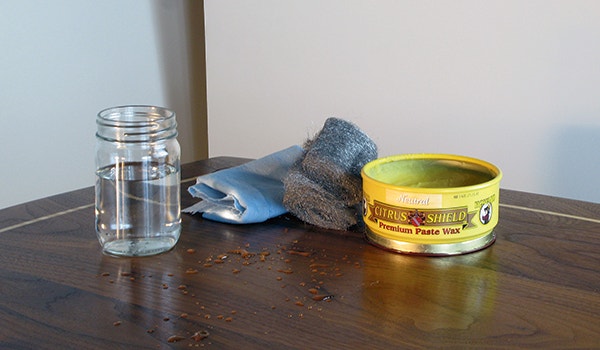How To Rub Out a Finish
Wax, 0000 steel wool, water, a towel and some elbow grease are all you need to take your finishing to the next level of look and feel.
I’ve often walked up to examine a finish that looked great, only to be dismayed when I ran my fingers over the surface. It simply didn't feel as good as it looked. There is a solution to that, and it's both easy and well worthwhile. Make rubbing out the finish your final step.
If you regularly do high gloss finishes, you already understand this, but rubbing out a satin finish is just as important, and even more rewarding. That's because a rubbed satin finish feels even better than a polished gloss one; it has a silky lubricity that adds immensely to the overall allure of a good finish.
Before you ask, yes, you can even rub out a thin finish, like French polish or wipe-on polyurethane, but it's a necessity, in my mind, with all sprayed and brushed-on finishes. Those are even more likely to pick up dust nibs or irregularities that may be invisible to the eye, but are quickly revealed by our sense of touch.
Here's the process in a nutshell. Let the finish both dry and cure. That happens in just days with shellac and lacquer, but can take weeks with water-based or oil-based varnishes and polyurethanes. If the surface has any dust nibs, and most do, sand it quickly and lightly with very fine paper: 400-grit or finer.
Dip a pad of 0000 steel wool into some paste wax and rub with the grain, back and forth, several times. I position myself with the grain at right angles to me, then, using a more than moderate amount of pressure, rub side to side, with the grain, overlapping strokes and going from one end to the other and back again. That's one double pass.
On thick finishes, I do at least six double passes of the entire top, though I’m less aggressive with thin finishes. Add more wax to the pad as you need it, then wipe all the wax off the surface with clean paper shop towels as soon as you are done rubbing. Even after wiping wax vigorously, you will probably find that there’s still enough wax to smear and leave fingerprints. They’re most visible on horizontal surfaces, so I add another step on tabletops to deal with that problem.
Sprinkle the surface with cold water, then go back over it with one more very light pass using a clean 0000 steel wool pad. As before, go with the grain. The cold water congeals the wax and makes it easier to remove the excess. That keeps the silky feel, but eliminates smears. Wipe off any remaining water with clean, dry, paper shop towels.
If you are one of those people, like I am, who tend to learn better visually, you’d probably rather see what the rub out process looks like. For that matter, you might want to see what the entire range of finishing steps looks like. If so, pick up a copy of my DVD. It follows my finishing flow chart, step-by-step, to let you see what all the procedures I write about actually look like. It’s the next best thing to hanging out with me in my shop!
Keep the inspiration coming!
Subscribe to our newsletter for more woodworking tips and tricks






